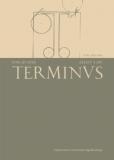O estetyce Jacopa Mazzoniego. Jacopo Mazzoni, Della difesa della Comedia di Dante
On the Aesthetics of Jacopo Mazzoni. Jacopo Mazzoni, Della difesa della Comedia di Dante
Author(s): Barbara Niebelska-RajcaSubject(s): Aesthetics, Ancient Philosphy, 16th Century, Book-Review, Italian literature
Published by: Wydawnictwo Uniwersytetu Jagiellońskiego
Keywords: Jacopo Mazzoni; Della difesa; mimesis; fantasy; credibile maraviglioso;
Summary/Abstract: Jacopo Mazzoni, Della difesa della Comedia di Dante, a cura di Claudio Moreschini e Luigia Businarolo, Società di Studi Romagnoli, Cesena 2017, 641 pp. The study examines Jacopo Mazzoni’s aesthetic thought expressed in his monumental, erudite work Della difesa della Comedia di Dante (1587). The first critical edition of the opening book of the treatise was published in 2017, with a preface, commentaries and notes by Claudio Moreschini and Luigia Businarolo. The edition includes also Introduttione e sommario—an extensive introduction to Della difesa that summarizes Mazzoni’s main aesthetic arguments, more broadly discussed in the subsequent seven books of his treatise. The paper briefly describes the genesis of Della difesa, stemming from the late 16th-century debate on Dante’s Comedy as well as Mazzoni’s main sources, and the interrelation between his aesthetic thought and philosophical ambition to create a synthesis and reconciliation of Platonic and Aristotelian traditions. Mazzoni’s poetics is based on a reinterpretation of Plato’s doctrine mixed with Aristotle’s conception of mimesis. Outlining main directions of the past and recent research on Della difesa, the paper emphasizes the most original and vanguard of Mazzoni’s positions on the nature of poetry. Firstly, the defi nition of mimetic arts in terms of creation of eidola (idoli) derived from poet’s intellect and imagination. Secondly, the ‘rehabilitation’ of sophistic art and the identifi cation of poetry with antique sophistry (in this context, Mazzoni’s reading of Plato’s Sophist is particularly important). These arguments involve a fairly novel claim that poesy derives from fantasy, which leads to the appreciation of ‘fantastic imitation’, and a re-evaluation of the Aristotelian theory of poetic probability interpreted as credibile maraviglioso, i.e. plausible and credible wonder including fantastic, imaginary elements, and even falsehood, provided that it seems probable and serves to evoke astonishment and aesthetic pleasure. Mazzoni’s insights on the imaginative nature of poetic creation—though criticised by his contemporaries (Torquato Tasso and Francesco Patrizi were the most acute adversaries of Mazzoni)—precede not only Francis Bacon’s statement about imaginative origins of poetry, but also 17th-century poetics of conceit with its liberal attitude towards poetic truth and falsehood, and furthermore, as emphasised in recent scholarship, S.T. Coleridge’s and T.S. Eliot’s views on poetry.
Journal: TERMINUS
- Issue Year: 20/2018
- Issue No: 4 (49)
- Page Range: 523-542
- Page Count: 20
- Language: Polish

